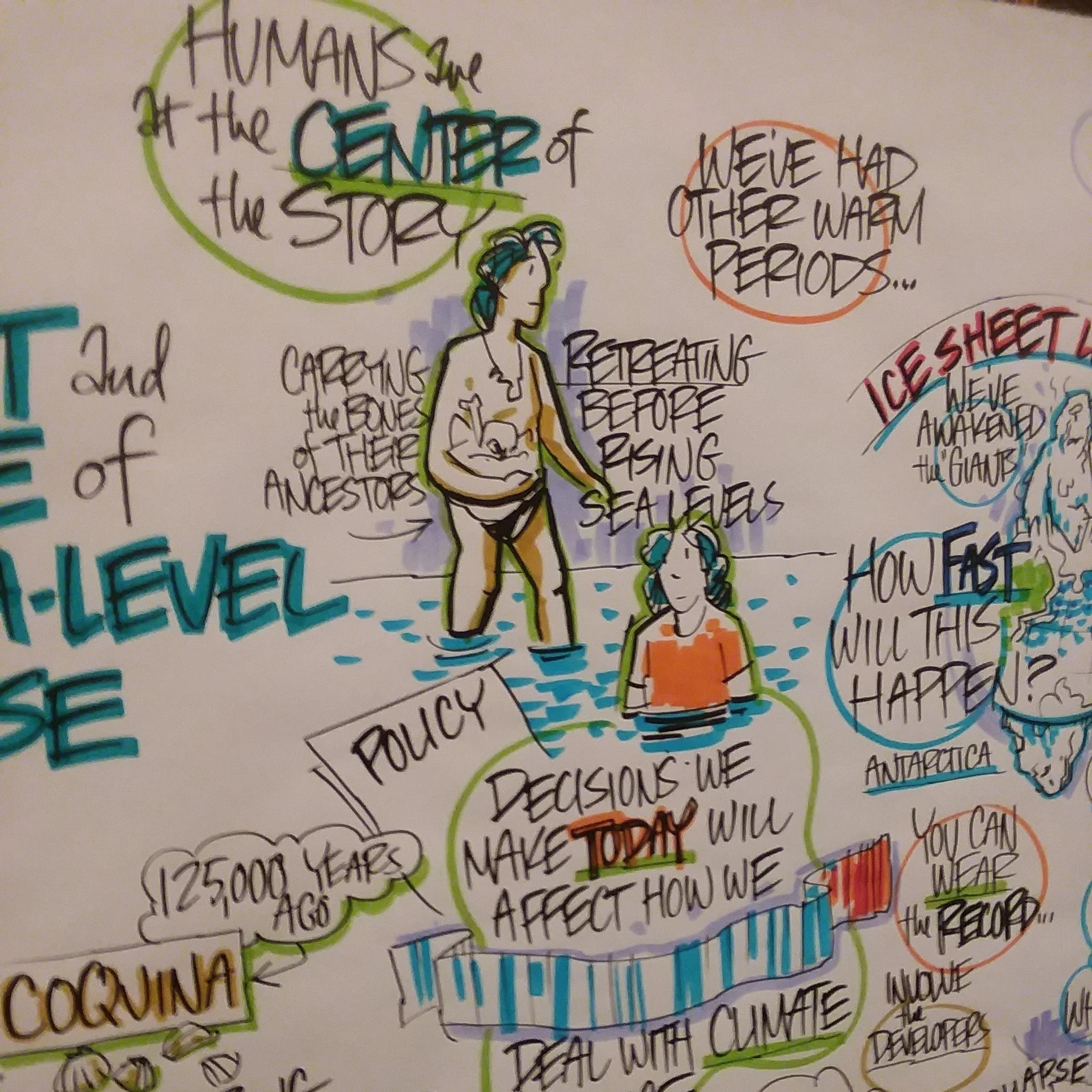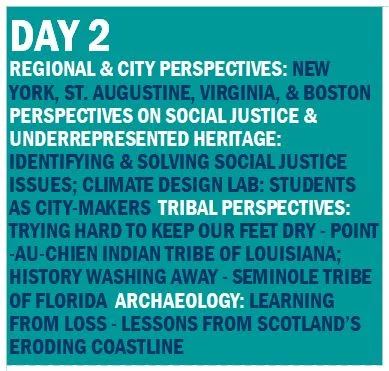By Leslie Moore, 2019 Intern
Each summer, Greater Portland Landmarks hires interns currently enrolled in historic preservation programs at colleges across the country to assist in our advocacy and education work. Our interns bring their knowledge of the preservation world in academia and in other parts of the country. In return, they get to live in a vibrant seaside city and gain valuable experience working in a historic preservation non-profit.
Leslie grew up in a Queen Anne house on the outskirts of Baltimore and is pursuing a Master of Arts in Public History and Historic Preservation at Colorado State University.
It is now common knowledge among Portlanders that Commercial Street in the Old Port floods during storms. This type of recurrent flooding is only expected to get worse in the coming decades as our climate continues to warm and sea levels rise. If global gas emissions continue to increase as predicted, Maine could face as much as a nine-foot sea level rise by 2100.
That level of sea rise, combined with high tides and a storm surge, will inundate historic buildings that sit near the coast and nearby rivers and streams. For this reason, Greater Portland Landmarks placed Historic Coastal Communities on their 2019 Places in Peril list.
Due to limited time and funds, waterfront communities in Maine need to think critically and realistically about which historic buildings they want to save, if they choose to save any at all. Professor Michelle L. Berenfeld suggests that communities use medical triage theory to classify which buildings to save and which are “goners”:
The building has such historical significance that is should be saved, even if that entails relocation
The building can be preserved for a few more decades with reasonable maintenance
The building won’t survive for another generation
Accepting the ruination of historic buildings goes against the instincts of historic preservationists and will undoubtedly be heartbreaking to watch. Rising sea levels will change our communities and lifestyles whether we are ready for it or not. We need to accept that future generations of Mainers may never fly a kite at Bug Light Park or explore the wharves of the Old Port. While we can mourn the loss of these experiences, the memories of these places don’t need to be forgotten.
I urge communities and preservation groups to consider creative projects as a means of sustaining public memory of our historic places that will wash away. The following projects won’t physically save any buildings, but they will keep them from being lost forever:
1. HABS Documentation
The Historic American Building Survey (HABS) has an intensive documentation process that includes high-quality photographs, detailed architectural drawings, and a thorough historical report. After a building is documented, the survey is archived at the Library of Congress. HABS surveys guarantee that information about a documented building will be available for future generations to access, but it does not result in a product that the public will interact with on a regular basis.
2. Collaborate with Artists
Communities can hire artists, photographers, videographers, etc. to document threatened historic buildings in whichever creative manner that they see fit. The resulting artwork can be displayed in exhibits, turned into murals, published in books, or aired on public television, so that it is easily available for locals to enjoy.
Example: Recently, the Pennsylvania Department of Transportation commissioned artist Laurie Lundquist to design murals along Route 28 after the transportation project resulted in the demolition of a Croatian community’s historic church.
3. Interactive Websites
Communities can also develop an interactive website dedicated to a building or buildings destroyed by rising sea levels. The website can contain photos, maps, and video clips about the structure. Websites are free to access and easy to update.
4. Virtual Reality Video Game
Technology advancements provide us with new tools to document historic buildings. Video designers can virtually recreate entire cities and landscapes; this is a tool archaeologists are increasingly taking advantage of. Designers can create a “game” that allows people to virtually walk through and around a destroyed historic structure and see it as it once was.
5. Oral History Project
Example: Since 1973, the National Park Service has interviewed 1,900 people with connections to Ellis Island; their archive is available online and used in school curricula.
While photographs capture what a building once looked like, people’s stories reveal more about how people interacted with and used a building. A historian or volunteers can interview locals about their memories associated with buildings lost to rising sea levels. The interviews can be transcribed and digitized so anyone can access them online. Interviews can also be conducted to capture locals’ feelings about the building’s destruction.
5. Museum Exhibit
Another option for preserving the memory of lost buildings is a museum exhibit. Coastal communities can develop an exhibit dedicated to destroyed and damaged historic resources. The public can visit the exhibit to learn about the history of the buildings and understand why climate change destroyed them. The exhibit can include many of the projects mentioned above--photographs, artwork, and oral histories.
Example: The Brooklyn Historical Society opened an exhibit about their historic waterfront that addresses the damage caused by Hurricane Sandy and rising sea levels.
Historic preservationists save old buildings in part to maintain a community’s identity and history. Rising sea levels may overwhelm some of our historic infrastructure, but they cannot wash away our memories. We need to get more creative and start saving memories, as much as historic buildings.
































